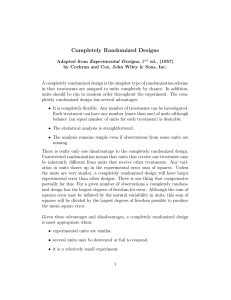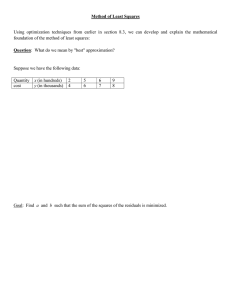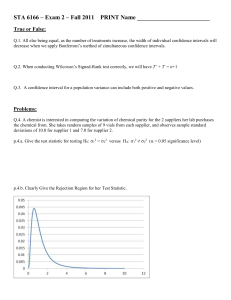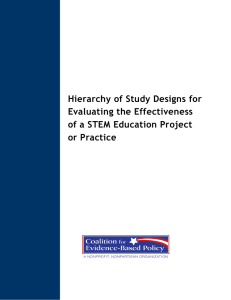practicalproblem1fall2005.doc
advertisement
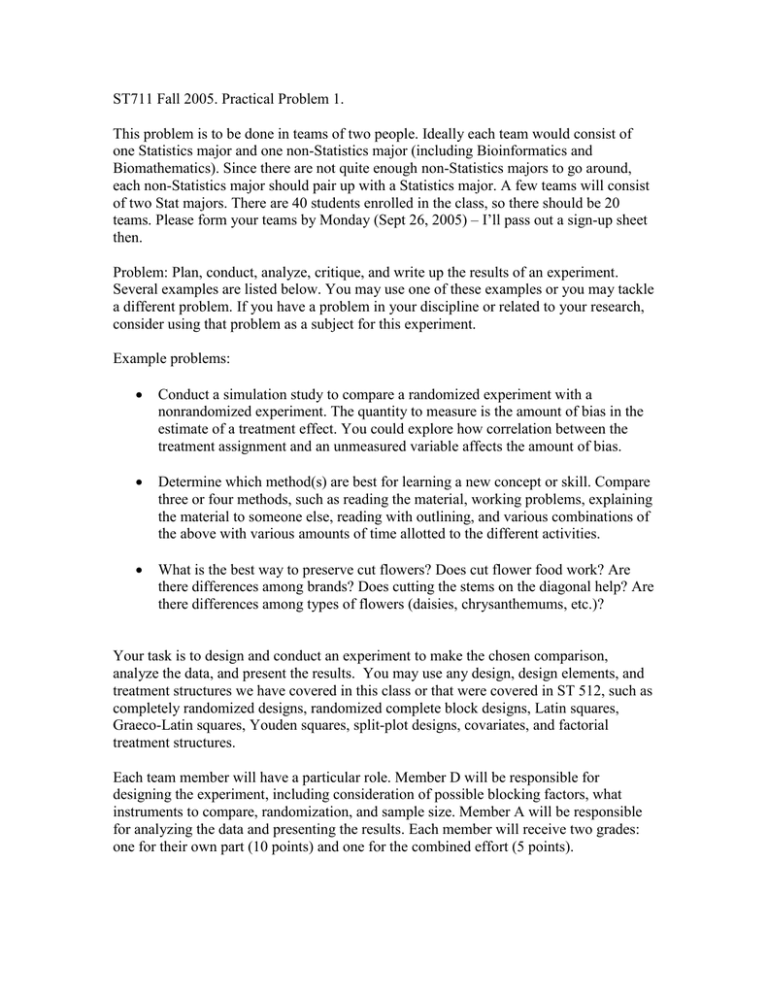
ST711 Fall 2005. Practical Problem 1. This problem is to be done in teams of two people. Ideally each team would consist of one Statistics major and one non-Statistics major (including Bioinformatics and Biomathematics). Since there are not quite enough non-Statistics majors to go around, each non-Statistics major should pair up with a Statistics major. A few teams will consist of two Stat majors. There are 40 students enrolled in the class, so there should be 20 teams. Please form your teams by Monday (Sept 26, 2005) – I’ll pass out a sign-up sheet then. Problem: Plan, conduct, analyze, critique, and write up the results of an experiment. Several examples are listed below. You may use one of these examples or you may tackle a different problem. If you have a problem in your discipline or related to your research, consider using that problem as a subject for this experiment. Example problems: Conduct a simulation study to compare a randomized experiment with a nonrandomized experiment. The quantity to measure is the amount of bias in the estimate of a treatment effect. You could explore how correlation between the treatment assignment and an unmeasured variable affects the amount of bias. Determine which method(s) are best for learning a new concept or skill. Compare three or four methods, such as reading the material, working problems, explaining the material to someone else, reading with outlining, and various combinations of the above with various amounts of time allotted to the different activities. What is the best way to preserve cut flowers? Does cut flower food work? Are there differences among brands? Does cutting the stems on the diagonal help? Are there differences among types of flowers (daisies, chrysanthemums, etc.)? Your task is to design and conduct an experiment to make the chosen comparison, analyze the data, and present the results. You may use any design, design elements, and treatment structures we have covered in this class or that were covered in ST 512, such as completely randomized designs, randomized complete block designs, Latin squares, Graeco-Latin squares, Youden squares, split-plot designs, covariates, and factorial treatment structures. Each team member will have a particular role. Member D will be responsible for designing the experiment, including consideration of possible blocking factors, what instruments to compare, randomization, and sample size. Member A will be responsible for analyzing the data and presenting the results. Each member will receive two grades: one for their own part (10 points) and one for the combined effort (5 points). Grading guidelines: Part D: Describe the design and experimental protocol in detail. Explain why you chose the particular design and what factors you considered. Provide sample size calculations, based on a few preliminary measurements. After the experiment is complete, evaluate whether the sample size chosen was appropriate. Grading will be based on clarity, suitability of the design, and correctness of the sample size calculations. Part A: Provide tables of means and standard errors. Write down the model, with explanation of all terms and subscripts, and provide an analysis of variance table with correct F-tests (not raw SAS output). Include appropriate contrasts and their standard errors. Write a one-paragraph summary of the results. Grading will be based on clarity, appropriateness of the tables and statistical analyses, and correctness of the calculations.
